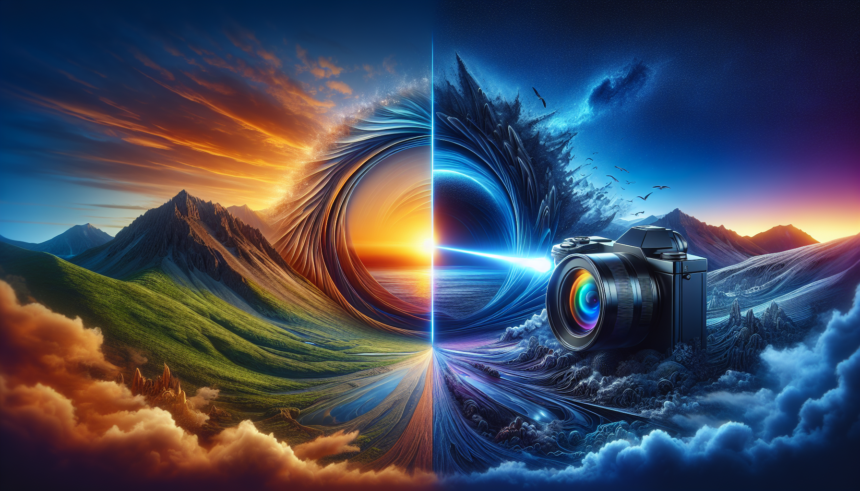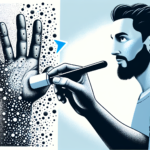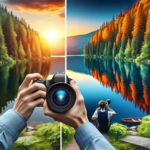Photography has always been about capturing moments, but the quest to encapsulate the true essence of a scene has led to the development and adoption of various techniques. High Dynamic Range (HDR) imaging stands out amongst these advancements, offering extraordinary potential for photographers to achieve stunningly detailed images. This article will delve deeper into HDR imaging, exploring its mechanics, benefits, and its transformative impact on photography.
Understanding HDR Imaging
HDR stands for High Dynamic Range, and its primary goal is to extend the range of luminance a camera can capture, encompassing both the brightest and darkest areas of a scene. Traditional photography often struggles with balancing light and dark areas, which results in loss of detail in either the shadows or highlights, or sometimes both. HDR imaging addresses this limitation.
The process involves taking multiple shots of the same scene at different exposure levels. Typically, this includes an underexposed shot to capture the detail in the bright areas, a normal exposure shot, and an overexposed shot to reveal details in the shadows. These images are then merged to create a single photo that represents a wider range of luminosity than is possible with standard digital imaging.
The Mechanics of HDR
Implementing HDR imaging involves several steps:
- Bracketing: A technique where multiple shots of the same scene are captured at different exposure levels. Cameras with HDR capabilities usually automate this process.
- Merging: The different images are combined using specific software algorithms that select the best-exposed parts of each photo.
- Tonemapping: The merged image often requires adjustments to compress the high dynamic range into a format that can be displayed on standard screens or prints. This step harmonizes the tones and enhances details.
Benefits of HDR Imaging
HDR photography offers a myriad of benefits that lift it above traditional imaging techniques.
1. Enhanced Detail
One of the most significant advantages of HDR imaging is its ability to reveal details that might be lost in standard photographs. By incorporating a wider range of luminosity, HDR images can simultaneously present intricate details in both the brightest and darkest parts of a scene, which would be impossible to capture in a single shot.
2. Realistic Representation of Scenes
HDR techniques are particularly beneficial in scenarios where the lighting environment has high contrast, such as sunrises, sunsets, or dimly lit interiors with bright windows. By balancing these extremes, HDR photography produces more realistic and natural representations of what the human eye perceives.
3. Artistic Flexibility
For artists and creative photographers, HDR processing offers unmatched flexibility. The ability to manipulate tones and contrasts during post-processing allows for unique and visually compelling compositions. From hyper-realistic to surreal, HDR imaging provides a playground for creative expression.
Challenges in HDR Imaging
While HDR imaging holds numerous advantages, it comes with its share of challenges that photographers must navigate:
1. Ghosting
Ghosting occurs when objects move between the multiple bracketed shots. This can result in blurry or duplicated images of those objects. Photographers often have to use software tools or manual editing to correct this issue.
2. Over-processing
One common pitfall in HDR photography is the tendency to over-process images, leading to unnatural and overly dramatic results. Balancing enhancements while maintaining a natural look requires skill and experience.
3. High-Contrast Scenes
While HDR excels in high-contrast environments, scenes with extreme contrast levels can sometimes result in images that look artificial. In such cases, careful adjustment and fine-tuning of the tonemapping process are essential.
HDR in Modern Photography
The advent of more advanced HDR techniques and tools has democratized high dynamic range imaging, allowing both amateur and professional photographers to leverage its benefits. Modern smartphones come with built-in HDR modes that automatically process images to balance brightness and contrast before you even press the shutter button.
Software Tools and Applications
Several powerful software tools facilitate HDR imaging:
- Adobe Lightroom: This popular photo editing software includes HDR merging capabilities and sophisticated tonemapping tools.
- Photomatix: A dedicated HDR software renowned for its comprehensive features and user-friendly interface.
- HDR Efex Pro: Part of the Nik Collection, this software offers a range of filters and presets tailored to HDR photography.
Practical Tips for HDR Photography
For photographers looking to explore HDR imaging, here are some practical tips to get started:
1. Use a Tripod
Stability is crucial in HDR photography to ensure that all bracketed shots align perfectly. A tripod eliminates camera shake and helps in capturing sharp, consistent images.
2. Explore Different Exposure Settings
Experiment with different exposure settings to find a balance that captures the broadest range of details in both the shadows and highlights. The standard practice is to take three or more exposures at 2 EV intervals, but feel free to adjust based on the scene.
3. Master Post-Processing
Invest time in learning and mastering post-processing software. The tonemapping phase is critical for achieving the desired HDR effect, and understanding how to fine-tune these settings will significantly enhance your final image.
4. Pay Attention to Composition
Even in HDR photography, the fundamentals of composition—such as the rule of thirds, leading lines, and framing—remain vital. A well-composed HDR image can be truly mesmerizing.
Conclusion
HDR imaging has brought a revolutionary shift in photography, allowing photographers to capture and present scenes with unprecedented realism and detail. By overcoming the limitations of traditional photography, HDR has opened up exciting new creative frontiers. Although it presents challenges like ghosting and risks of over-processing, mastering HDR imaging can elevate one’s photography to a whole new level. Whether you are an amateur looking to explore the basics or a professional seeking to push creative boundaries, HDR offers invaluable tools and techniques to experiment with and perfect the art of capturing moments beyond the shadows.
Frequently Asked Questions (FAQs)
1. What is HDR in photography?
HDR stands for High Dynamic Range. HDR photography involves capturing multiple shots of a scene at different exposure levels and merging them to create a single image with a broader range of luminosity, revealing more details in both shadows and highlights.
2. Do all cameras support HDR imaging?
While most modern digital cameras and smartphones offer HDR capabilities, older models may not support this feature. HDR functionality is typically available on cameras with bracketing options that automate the capture of multiple exposures.
3. Can HDR be used for all types of photography?
HDR is especially useful in high-contrast scenarios such as landscapes, cityscapes, and interiors with mixed lighting. However, it may not be suitable for all scenes, particularly those with moving subjects, which can result in ghosting (blurred object due to motion).
4. How do I reduce ghosting in HDR photography?
Ghosting can be minimized by using a tripod to stabilize the camera and taking the shots quickly to reduce the chance of movement. Many HDR software programs also offer tools to correct ghosting during the merging process.
5. Is HDR the same as editing a single RAW image?
While editing a single RAW image can enhance details to an extent, HDR involves combining multiple exposures to expand the dynamic range further than what a single exposure can achieve. HDR provides finer detail and a more accurate representation of the scene’s full range of lighting.









